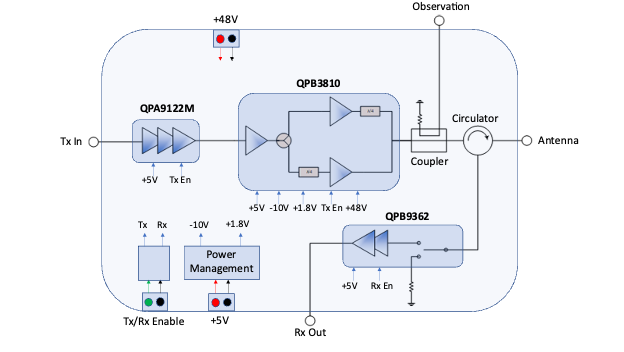Open RAN’s Promising Future for 5G Design
June 7, 2023
Say the term “5G” and consumers often think about getting the most out of their smartphones or tablets, setting up a personal Wi-Fi hotspot, watching video on demand in an airport, or making video calls to their family on the other side of the country. Electronic engineers and designers may think that way too, but they must also consider the demands that 5G systems and infrastructure put on their work. Over the years, key players in the telecommunication industry have created an ecosystem that forces service providers like ATT, T-Mobile and others to be locked with specific equipment vendors into various system configurations.
Open RAN (Open Radio Access Networks) is a standardized approach to RAN hardware and software disaggregation. Open RAN will foster network vendor competition and innovation. It is a methodology to open up these systems for manufacturers to be able to service these networks. Open RAN offers greater flexibility and choice in designing and implementing 5G products.
Traditionally, the radio access network components were tightly integrated and controlled by a single vendor, limiting the options for product designers. By using the Open RAN methodology, designers can leverage a more open and standardized architecture, allowing them to mix and match components from several vendors. This flexibility enables designers to select the hardware and software solutions that work best for them, leading to improved product performance, innovation, and cost-effectiveness.
Take a Deeper Dive
.png)
Explore this topic in greater detail: The Future of Mobile Infrastructure & Open-RAN.
In the marketplace, Open RAN can promote increased competition benefiting both designers and consumers. By breaking down the traditional vendor lock-in and promoting interoperability, Open RAN encourages the participation of multiple vendors and start-ups. This more competitive landscape can lead to technological advancement reaching the market faster. As a result, designers can access a wider range of cutting-edge technologies, and consumers can take advantage of more diverse and innovative 5G products that cater to their specific needs.
Qorvo’s Newest Open RAN 5G Support
Qorvo’s most recent offering to promote Open RAN methodology is the QPB3810, QPB9362 and QPA9122 included in a full RF front-end reference design for 5G mMIMO applications. The reference design pictured below, provides a complete solution for a RF front end (RFFE) for an 8W average output power mMIMO 5G application in band n78 (3.4-3.8 GHz). It provides a transmit and receive solution from the digital front end to antenna filter in a compact layout, which can be directly implemented into an array.
The transmit chain features the QPA9122M as a wideband high linearity pre-driver and the QPB3810 as a highly efficient GaN final stage power amplifier module. The transmit chain also includes a directional coupler for DPD observation path as well as a circulator. For the receive chain, the reference design includes the low noise QPB9362 switch LNA.

Reference Design Board: 8 Watt mMIMO 3.4-3.8 GHz RF Front End.
The QPB3810 is the first commercially released GaN based module with an integrated bias controller factory programmed to set the optimal bias points of the Doherty Power Amplifier Module (PAM). The QPB3810 is a 48V, 8 W average power PAM covering the 3.4 – 3.8 GHz band. The bias controller includes a temperature sensor allowing it to automatically adjust bias over temperature and includes an enable pin for fast TDD switching. The QPB3810 is available in a compact 12 mm x 8 mm SMT package, offering a much smaller footprint than traditional discrete component solutions; and similar to Qorvo’s other PAM products which require minimal external circuitry.

Block diagram of 8 Watt mMIMO 3.4 GHz RF Front End Reference Design Board.
Also being released: Qorvo’s QPB9362. This receive module is targeted for 5G wireless infrastructure applications configured for TDD-based mMIMO architectures. Its switch LNA module integrates an LNA with a high-power handling switch which can be used as a failsafe path to termination when a radio is in transmitting mode. The QPB9362 provides 34.5 dB of gain with 1.1 dB typical noise figure over the entire operating frequency band in the receiving mode and LNA power down mode is available via a transmit/receive control pin on the module. It is packaged in a RoHS-compliant, compact 5 mm x 3 mm LGA package.
Faster Development Plus Security
Open RAN clearly enables rapid deployment and scalability for 5G networks, benefiting both designers and consumers. The open and standardized interfaces allow for easier integration and interoperability of network components, simplifying the deployment process. This streamlined approach accelerates the time-to-market for electronic product designers, enabling them to introduce innovative 5G products more quickly. Consumers, on the other hand, benefit from faster network expansion and improved coverage, leading to enhanced connectivity and a better user experience.
Open RAN promotes greater security and resilience for 5G products and networks. With a closed network architecture, vulnerabilities or flaws in a single vendor's equipment can potentially compromise the entire network. In contrast, Open RAN's multi-vendor approach reduces the impact of security breaches, as components from different vendors can be independently assessed and updated. This enhanced security framework reassures electronic product designers and consumers, providing them with more confidence in the reliability and integrity of their 5G products and networks.
Learn more about Qorvo’s 5G modules in this press release.